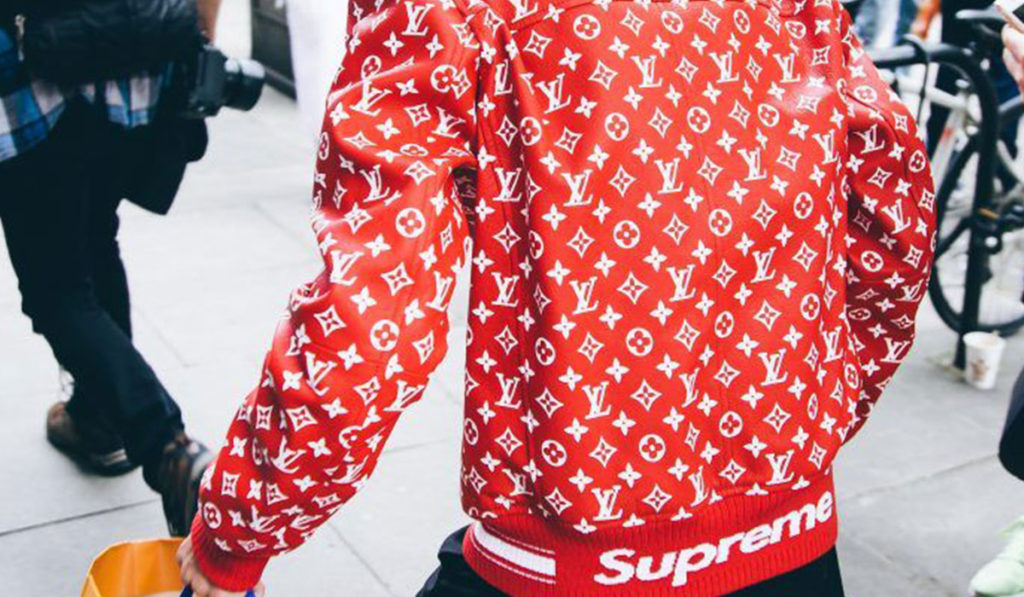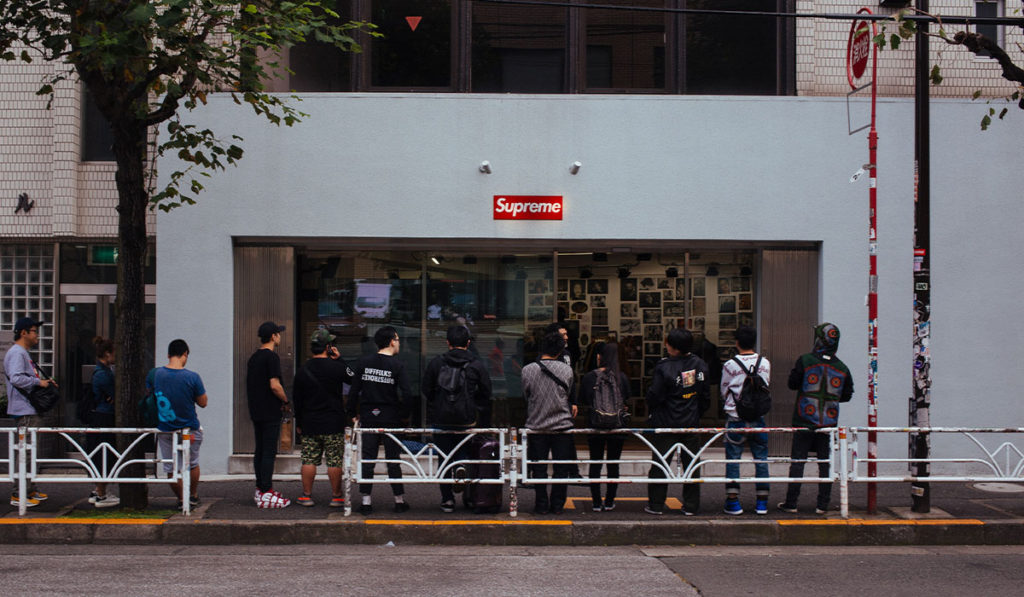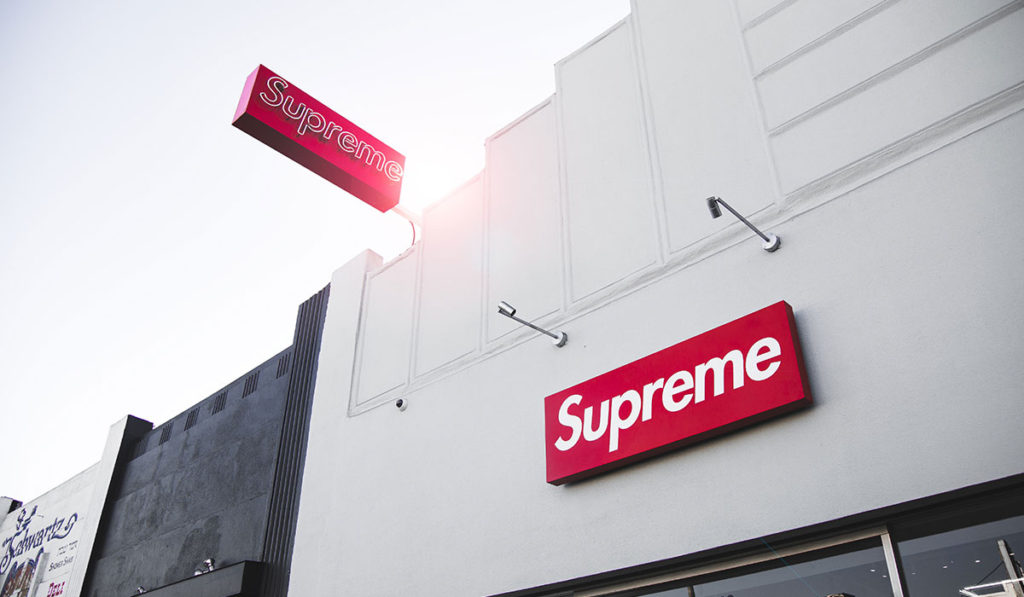When we think of streetwear, one of the first brands that pop-up in mind is always Supreme. Its memorable minimalistic red and white logo has appeared everywhere, from hoodies to toys and luxury Lamborghinis.
With millions of consumers flocking to get their hands on a bit of Supreme, lining up for hours to buy the latest, the brand has come a long way since its initial launch 25 years ago.
Early Beginnings
James Jebbia, a fashion designer who had previously worked with the famous Shawn Stussy from 1991-94, lived his younger years in the streets of New York, captivated by the edgy ‘cool’ factor of the young skaters. As he and Stussy went their separate ways, Jebbia opened a small shop on his own with hopes to create a brand that would appeal and attract these very skaters he admired.
Launching the shop on a stretch of Lafayette Street in Manhattan, New York, Supreme started off exactly like that – a skateboard and apparel brand. Yet, upon capturing the attention of a couple of well-known local skaters, the brand began to grow into something much more.

Serving as a symbol of the underground, Supreme branded itself as something for the authentic and real. As Jebbia continued to connect with more artists and photographers along the way, he discovered the heart of Supreme beating louder, as the spread out through a multitude of collaborations.
Collaboration On Collaboration
There is no end to the number of collaborations Supreme has had over the years. From some of. the hottest musicians like Chris Brown and Justin Bieber to luxury fashion houses like Louis Vuitton, Supreme has worked with thousands of other brands, plastering its famous red-and-white logo across everything.

This ability to be on everything and with everyone has definitely helped its ‘cool’ factor, as Supreme has played on the idea of influencer marketing long before the days of Instagram or YouTube. Collaborations with luxury brands like Louis Vuitton or Lamborghini has also allowed Supreme to solidify itself in the high-end world, transforming the brand from local apparel to limited-edition luxury.
Free Spirited and Fun
Another reason for Supreme’s massive success has been its popularity amongst younger consumers, often in their teens. Due to its roots in skateboarding culture, the branded is the epitome of what streetwear represents – free-spirited and fun with a mix of rebelliousness. As Justin Gage, a data scientist and streetwear analyst comments,
“A brand that’s heavily integrated with art and culture that tends to drive demand through consumer desire and consumer passion as opposed to explicit marketing. Supreme has become successful in marketing their brand, paradoxically, by not marketing their brand.”
Unlike many other fashion brands that focus on a single-lane and at times, may come off too serious, Supreme has always held a light, fun vibe to its branding. Selling everything from Supreme-branded measuring cups to Oreos, the company never fails to surprise people with what odd and out-of-the-ordinary products it may release next.
The Hype Factor
Supreme has largely based its marketing on word-of-mouth and built-up hype, a factor that heavily influences its main demographic of younger consumers. With every new announcement of a product release, long lines of eager teens and young adults gather, which only feeds to the curiosity. In an age of social media, these circulating photos and shares feed fuel to the factor of hype, thus propelling the brand even further.

For its releases, Supreme shoppers can expect to pay anywhere from $30 to $100 for a single hat or shirt, to $150 to $450 for a jacket. At a certain point, their demand has grown so large, that whatever they release, it is instantly seen as ‘hype’ and desirable.
Playing to the Scarcity Heuristic
In social psychology, the scarcity heuristic refers to a mental response to perceived value for specific items based on how much that item will be lost to fellow competitors. It tricks our brain to believing that the more difficult something is in getting, the more worth it has.

This idea may explain the magic behind Supreme’s crazy following. With so many of its products is limited, this has caused hordes of hypebeasts and casual consumers alike to seek it out and buy it up whenever possible. On top of that, the consistency behind the brand’s limited-edition releases has added to its desire.
Despite its increased demand and popularity over the decades, the supply for Supreme merchandise has remained limited. In fact that, even with its massive success globally and long-lasting demand, Supreme only has about 12 stores open in the entire world.
The Success of Supreme
From small skateboard shop to gaining a massive cult-following, Supreme has definitely made its name in culture. Selling $40 to $100 dollar graphic shirts and hoodies to hyped consumers, the brand has transformed into a titan, apparently valued to be a $1 billion dollar business.
Having sold 50 percent share to the Carlyle Group for $500 million, some argue that Supreme may lose its core messaging and branding. Yet, as the company continues to expand its reach across many different industries, the investment will only help to strengthen the supremacy of Supreme in streetwear culture.
“We’re not thinking about image and legacy, we just want to make great stuff, season in, season out, no more, no less. New York is a great place and I’m lucky to have worked with a lot of the same people for a long time, and we’re just all on the same page. We’re not trying to be everything for everybody. We’re not trying to please the masses. We just want to grow at a reasonable pace. Supreme hasn’t changed for 20 years, and that feels very simple to me.”
– James Jebbia



